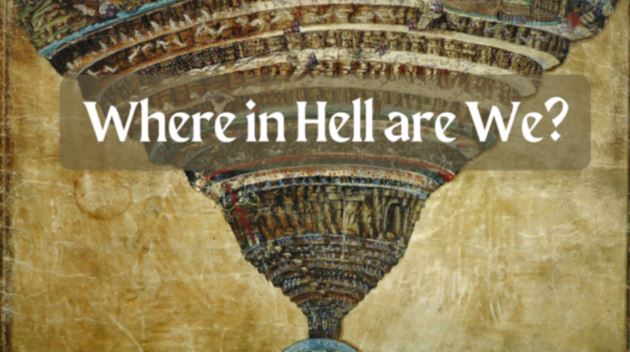Inferno (Dante)

Inferno (Italian: [iɱˈfɛrno]; Italian for “Hell”) is the first part of Italian writer Dante Alighieri’s 14th-century epic poem Divine Comedy. It is followed by Purgatorio and Paradiso. The Inferno describes Dante’s journey through Hell, guided by the ancient Roman poet Virgil. In the poem, Hell is depicted as nine concentric circles of torment located within the Earth; it is the “realm … of those who have rejected spiritual values by yielding to bestial appetites or violence, or by perverting their human intellect to fraud or malice against their fellowmen”.
As an allegory, the Divine Comedy represents the journey of the soul toward God, with the Inferno describing the recognition and rejection of sin.
The poem begins on the night of Maundy Thursday on March 24 (or April 7), 1300, shortly before dawn of Good Friday.[3][4] The narrator, Dante himself, is thirty-five years old, and thus “midway in the journey of our life” (Nel mezzo del cammin di nostra vita[5]) – half of the Biblical lifespan of seventy (Psalm 89:10, Vulgate; Psalm 90:10, KJV). The poet finds himself lost in a dark wood (selva oscura[6]), astray from the “straight way” (diritta via,[7] also translatable as “right way”) of salvation. He sets out to climb directly up a small mountain, but his way is blocked by three beasts he cannot evade: a lonza[8] (usually rendered as “leopard” or “leopon”),[9] a leone[10] (lion), and a lupa[11] (she-wolf)

